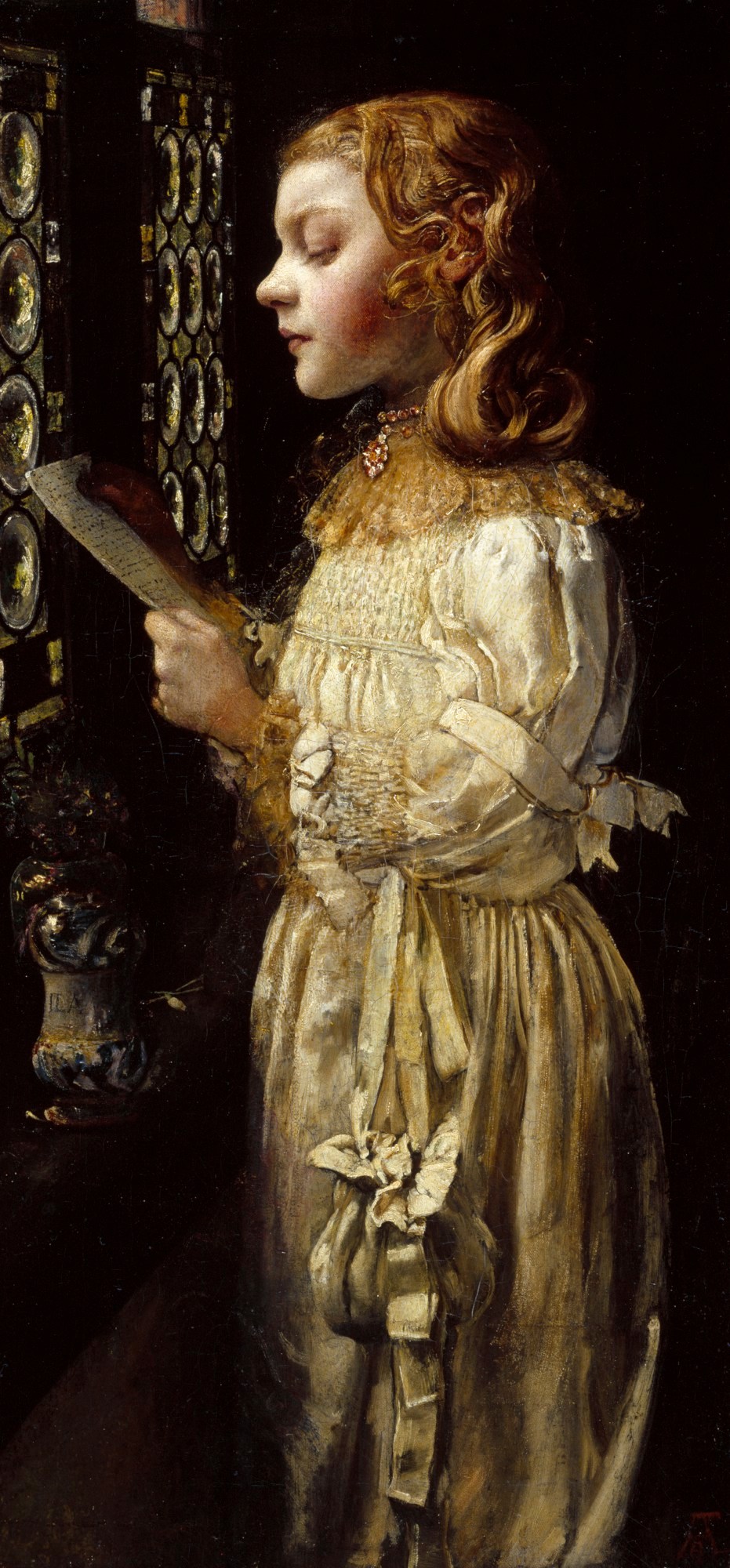
Annie Swynnerton ARA, The Letter, ?1900-20.
Oil on canvas. 1016 mm x 482 mm. © Photo: Royal Academy of Arts, London. Photographer: John Hammond.
This image is not available to download. To licence this image for commercial purposes, contact our Picture Library at picturelibrary@royalacademy.org.uk
The Letter, ?1900-20
Annie Swynnerton ARA (1844 - 1933)
RA Collection: Art
This painting depicts a young girl reading a letter, her face and clothes illuminated from the left side of the canvas. While the girl is undeniably the focus of the painting, it is not certain whether this is a portrait of a specified individual or if the artist intended it as a genre painting or allegorical work. Annie Swynnerton ARA was a successful portraitist, making commissions for notable figures of her era, including the author Henry James and the Suffragist Millicent Fawcett. This painting is notably different from these works, however. Conventional portraits tended to show the subject looking directly at the viewer, but the girl in this painting is shown in profile, absorbed in her letter. It is likely therefore that the identity of the sitter is less important than the activity depicted, which gives the painting its title.
Although the identity of the sitter is uncertain, the girl is clearly from a family of considerable wealth. Her clothing indicates her comfortable situation and the act of reading a letter implies she is an educated, refined young lady. Nothing in the painting suggests what is contained within the letter, but this is not unusual for paintings of this subject – its content remains a mystery. Instead, the viewer is left to fill the words of the letter with their own imagination.
The painting itself appears notably narrow, a feature which may have been inspired by Swynnerton’s time in Rome where she studied from 1874 after completing her initial training at Manchester School of Art. In Rome, Swynnerton became familiar with Italian Renaissance altarpieces which often had narrow side panels depicting a single saint. This format may have influenced the artist’s decision to paint The Letter as an unusually narrow work. The result is that the young girl is the sole focus of attention and seems almost confined by the limits of the canvas. Given Swynnerton’s associations with the suffrage movement and her active support of the advancements of women’s rights, it is tempting to interpret this claustrophobic format – with the edges of the canvas seemingly enclosing the girl in a small space – as a metaphor for the societal restrictions on women. However, there is no evidence from the artist that this was her intention, so this interpretation remains a possibility but not a certainty.
Object details
1016 mm x 482 mm
Associated works of art
1 results
Start exploring the RA Collection
- Explore art works, paint-smeared palettes, scribbled letters and more...
- Artists and architects have run the RA for 250 years.
Our Collection is a record of them.




